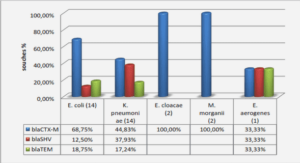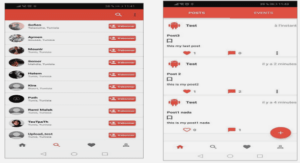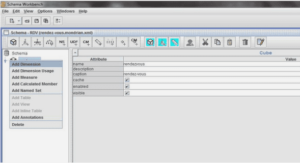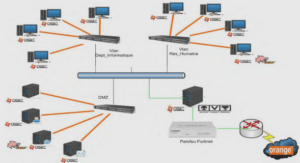MmWave Wireless Technology Overview
The need for very high data rate radio communications applications (1 Gbit/s or higher) makes the mmWave technology one of the most promising forms for multi-gigabit wireless communications for wireless networks due to its huge unlicensed bandwidth (up to 7 GHz). This huge bandwidth represents great potential in terms of capacity and flexibility, making 60 GHz technology very attractive for gigabit wireless applications. The fact that this band is unlicensed and largely harmonized across most regulatory regions in the world is a big advantage, in contrast to the meager spectrum available in the lower frequency bands for existing technologies such as Wi-Fi. Another factor that makes this technology so attractive is that 60 GHz regulation allows much higher effective isotropie radiated power (EIRP) compared to other existing wireless local and personal networks (Wlans and Wpans).
The data link layer
It is the second layer in the Open Systems Interconnect (OSI), this layer provide data transmission control, it handles the moving of data in and out across the physical layer in a network. It also ensures that incoming data has been received successfully by analyzing bit patterns at special places in the frames.
The data link layer has many specifie functions :
It provides a well-defined interface to the network layer.
It deals with transmission errors.
It regulates the flow of data so that slow receivers are not swamped by fast senders.
This layer is divided into two sublayers: the Medium Access Control (MAC) and the Logical Link Control (LLC).
The Medium Access Control sub layer
This layer contains all the protocols that are used to determine who uses next a multi-access channel. The main function of this layer is to regulate the use of the medium through a channel access mechanism, this mechanism presents a way to divide the main channel between nodes, and this operation of channel sharing is controlled by the MAC protocol, it tells each node when to transmit its packets and when it is expected to receive packets.
The main objective ofthe MAC protocol algorithm is to ensure a secure data transmission, and to prevent collisions that happen occasionally in the network for many reasons, depending on the type of the network that is used and its topology, also many problems that we will talk about and explain later, such as the deafness problem, the hidden and exposed terminais problems … All of these problems are main reasons for causing collisions and data loss, which reduce the performance of the network entirely.
MAC protocols goals
Medium Access control techniques are designed to achieve the following goals:
Initialization: The technique enables network stations, upon power-up, to enter the state required for operation.
Faimess: It should treat each station in a fair way regarding the waiting time until the station gains entry to the network, access time and transmission time.
Priority: Giving priority of channel access and communication time to sorne stations over others depending on the types of needed services.
Limitations to one station: the transmission should be done by one station at a time.
Reception: The technique should ensure the reception of the packets, also ensure that there is no duplication and the packets are received in the right order.
Error limitation: The capability of encompassmg an appropriate error detection scheme.
Recovery: In case of packets collisions, the method should be able to recover, which means being able to halt all the transmissions and select one station to retransmit.
Reconfiguration: The technique should enable a network to accommodate the addition or deletion of a station with no more than a noise transient from which the network station can recover.
Reliability: By enabling the network confine operating despite of a failure of one or several stations
Protocols for 60 GHz
Previous works attempted to adapt or create new methods in order to guaranty a better communication and to resolve medium access control issues when using mm Waves. Many authors worked on the directivity issue and how to use directional antennas to increase the communication range and guaranty a better connectivity. For example in the authors proposed a directional medium access control (DMAC) algorithm for wireless communication networks operating in the 60 GHz bands, this method presents an efficient approach to determine the presence of a direct path between transmitter and receiver, which will be used to determine if the environment is LOS or non-LOS.
In they investigated spatial interference statistics for multigigabit outdoor mesh networks operating in the unlicensed 60-GHz « millimeter (mm) wave » band. Also in, Fan proposed a network architecture for 60 GHz wireless personal area networks (WPANs) using directional antennas, which describes protocols for neighbor discovery, medium access, and multi-hop route establishment that exploit directional antennas to improve network performance and maintain connectivity.
|
Table des matières
Chapter 1 Introduction
1.1 Introduction
1.2 Research objectives
1.3 Structure of the thesis
Chapter 2 The 60 GHz frequency band
2.1 Mm Wave Wireless Technology Overview
2.2 Challenges and properties of the 60 GHz channel
2.3 Advantages of 60 GHz
2.4 Potential applications
2. 5 Adapted 60 GHz MAC protocol
Chapter 3 MAC protocol Challenges
3.1 Introduction
3.2 The Hidden-Terminal problem
3.3 The Exposed Terminal problem
3.4 The Deafness problem
Chapter 4 MAC protocols overview
4.1 Introduction
4.2 The data link layer
4.3 The Medium Access Control sub layer
4.4 MAC protocols goals
4.5 Conventional MAC protocols
4.5.1 Contention-free protocols
4.5.1.1 Time Division Multiple Access (TDMA)
4. 5.1.2 Frequency Division Multiple Access (FDMA)
4.5.1.3 Code Division Multiple Access (CDMA)
4.5.2 Contention-based protocols
4.5.3 Contention-based protocols types
4.5.3.1 Aloha
4. 5.3.2 Carrier Sense Multiple Access (CSMA)
4.5.3.3 CSMA/CD (CSMA with collision detection)
4.5.3.4 CSMA/CA (CSMA with collision avoidance) or Media Access with Collision Avoidance (MACA)
4. 5.3.6 :MACA for wireless networks (MACAW)
4. 5.3.7 Busy Tone Multiple Access (BTMA)
4.5.3.8 Dual Busy Tone Multiple Access (DBTMA)
4.5.4 Hybrid Protocols
4. 5.4.1 Distributed Packet Reservation Multiple Access Protocol (D-PRMA)
4.5.4.2 Collision Avoidance Time Allocation Protocol (CATA)
4. 5.4.3 HOP Reservation Multiple Access Protocol (HRMA)
4.6 MAC protocol 802.11
4. 7 Protocols for 60 GHz
Chapter 5 Proposed method
5.1 Introduction
5.2 The Proposed MAC Algorithm
5.3 The standard 802.11 ad
5.4 The combination between 2.4 GHz and 60 GHz
Chapter 6
6.1 Introduction
6.2 OPNET Modeler
6.2.1 The Node Model
6.2.2 Directional Antenna
6.2.2.1 Antenna module
6.2.2.2 Antenna pattern
6.2.3 The Process Model
6.2.3.1 The Process Model Editor
6.2.3.2 State connections – Transitions
6.3 The Network Model
6.3.1 Simulation parameters
6.4 Simulation results
6.4.1 Performance of the network throughput
6.4.2 Performance of the packet retransmission
6.4.3 Performance of the network delay
6. 5 Conclusion
Chapter 7 Conclusion and perspectives
7.1 Conclusion
7.2 Perspectives
References
![]() Télécharger le rapport complet
Télécharger le rapport complet






